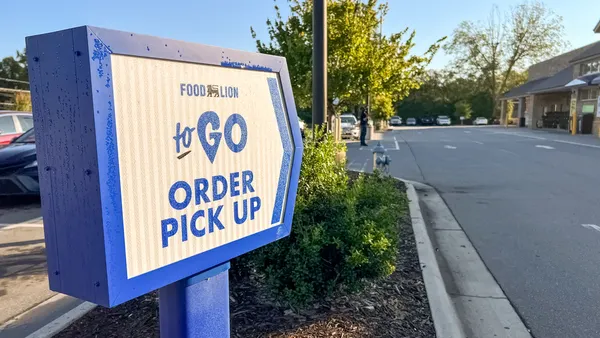Dive Brief:
- About 50% of shoppers have purchased groceries both in-store and online in the last 30 days, according to a new report from Retail Feedback Group that surveyed 2,000 individuals in late April and early May.
- The behavior is more common among younger shoppers, with 66% of Gen Z and 61% of millennials purchasing both online and in-store. About 52% of Gen X and 37% of Baby Boomers report shopping both channels.
- During the past three months of the COVID-19 pandemic, 38% of shoppers reported using one online grocery provider, while 62% used two or more providers. The report said this suggests people tried more than one service to determine which would best meet their needs.
Dive Insight:
While many retailers know younger consumers are buying groceries online, the report shows they are still going in stores, too. This means companies need to not just invest in both channels, but figure out ways to tie them together, as well. In turn, with a significant portion of older shoppers going online, retailers will need to build an experience that suits this demographic as well.
Grocers have taken note of consumers’ growing shift toward omnichannel shopping. Kroger, for example, recently saw strong Q1 earnings as it capitalized on in-store stock-up buying and also expanded availability of pickup and delivery during the pandemic, adding time slots and waiving pickup fees. In a recent interview with Grocery Dive, Albertsons CEO Vivek Sankaran said shoppers that engage digitally with the company spend more overall.
According to the research, 34% of online grocery shoppers saying they bought most recently from a supermarket, up from 22% last year. But this isn’t expected to stick, with 20% of those shoppers saying they plan to shop less online for groceries in the coming year.
In terms of where consumers are shopping online Walmart still has the highest overall percentage (40%), while Amazon dropped to 14%, down from 29% last year. Instacart (36%) rose from 27% last year.
The surge in online shopping has largely been driven by safety concerns involving in-store shopping, and RFG's survey shows those concerns remain high. Some 67% of shoppers say they are somewhat or not at all confident that it is safe to shop in physical stores. When it comes to the actual safety of food, about 54% of respondents said they were “highly confident” the food they purchased during the pandemic was safe to eat, while 44% said they were “somewhat confident.” Of supermarket shoppers, just 33% said they were confident in the safety of their food.
Respondents noted they want to see better product availability and fewer empty shelves in addition to enhanced safety protocols like mask wearing and mandatory social distancing.













